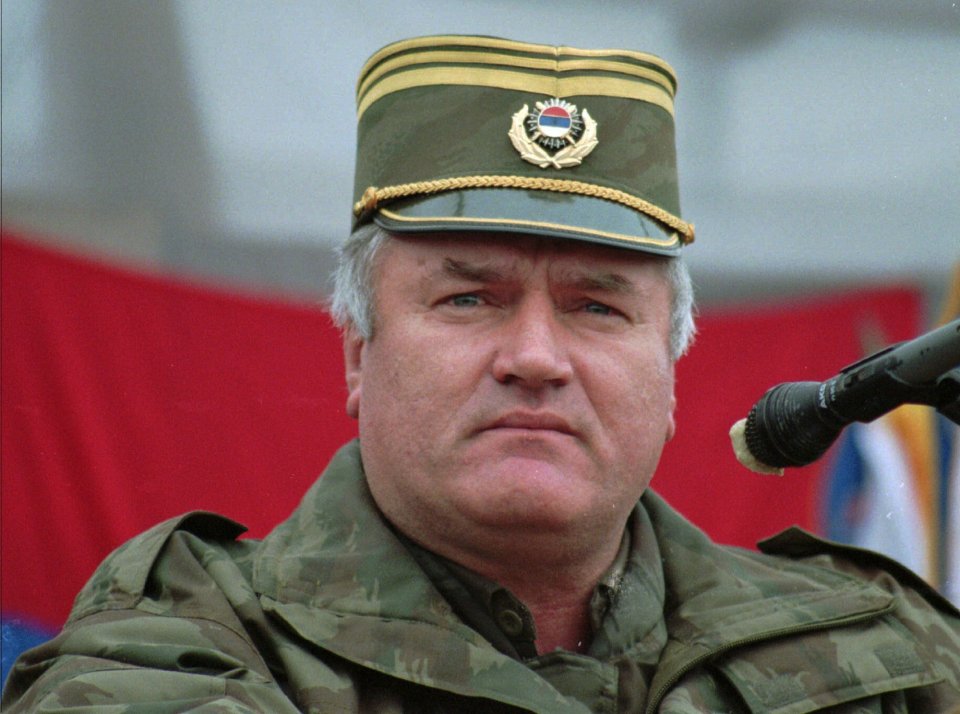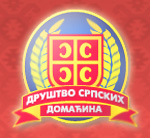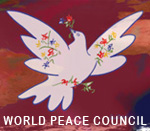The Mladic Case: A Stain On Civilization
| Activities - Comments |

“All that is a lie. This is a NATO-style trial.”
The defiant words of General Mladic to the judges of the NATO controlled ad hoc war crimes tribunal for Yugoslavia rang out loud and clear the day they pretended to convict him. He could have added ‘but history will absolve me” and a lot more but he was thrown out of the room by the chief judge, Orie, in his condescending style, as if he was dealing to a truant schoolboy, instead of a man falsely accused of crimes he did not commit.
The Russian Foreign Ministry spokeswoman, Maria Zakharova, echoed the general’s words on November 23,
“We have again to state that the guilty verdict, delivered by the International Criminal Tribunal for the former Yugoslavia against Mladic, is the continuation of the politicized and biased line, which has initially dominated the ICTY’s work.”
Both General Mladic and the Russian government are correct. The document called a “judgement” proves it for it reads like a propaganda tract instead of a court judgement. In just over 2500 pages the trio of “judges” recite the prosecution version of events nonstop, from the first paragraph to the last. The defence is mentioned only in passing.
The ICTY rejects claims that it is a biased court, a NATO court but they proved it with the very first witnesses they called to set the stage for what was to follow. A man named Richard Butler was called to testify on general military matters and the political structure in Bosnia and the Republic Srpksa. He was introduced as a “military analyst” which he is, but not an independent one. No, at the time of his testimony he was a member of the United States National Security Agency, seconded to the ICTY as a staffer. So, the first witness against General Mladic was biased on two counts. He worked for the American intelligence services that supported the enemies of General Mladic and Yugoslavia, and he was part of the prosecution staff. It is as if the NSA and the prosecutor had, at the same time, stepped into the box to testify against the accused. Butler’s testimony plays a large role in the trial; the same role he played in the trial of General Krstic.
Another military analyst expert then appears, Reynaud Theunens, also working on the staff of the prosecution. Experts in criminal trials are supposed to be completely neutral. But not only was he acting on behalf of the prosecutor, he was at the same time a Belgian Army intelligence officer. So there we have it right at the opening of the trial. The stage is set; NATO is in charge of the case. NATO officers work inside the tribunal. It is a NATO tribunal in UN disguise. Accordingly, throughout the judgement NATO crimes, and the crimes of the opposing Bosnian forces are never referred to. The context is deliberately constricted to give a very narrow and distorted picture of events.
The judgement continues with detailed recitations of prosecution witness testimony. Defence witnesses, on the few occasions they are referred to, never have their testimony set out in like detail. One line is devoted to a witness and all of them are dismissed as biased if their testimony is at odds with the testimony of the prosecution witnesses.
And of what does the prosecution evidence consist? It consists of some oral testimony of NATO military officers involved in events and who were working in the UN forces against General Mladic and his forces, the testimony of opposing Bosnian Army soldiers or their families, and witness statements and “adjudicated facts,” that is “facts” held to be so by another set of judges in another case no matter whether true or false. A number of times, the judges state something to the effect that, “the defence claims X did not happen and relied on certain evidence to support that claim. Where this evidence conflicts with the adjudicated facts we reject it.”
There are many instances of reliance on hearsay. Time and again, a paragraph in the judgment begins with the words, “The witness was told…” Thanks to corrupt jurists like Canadian former prosecutor Louise Arbour, the use of hearsay, even double hearsay was allowed in as evidence in these trials when it is forbidden in the rest of the world because hearsay testimony cannot be verified or checked for reliability and accuracy.
I was not able to observe much of the trial and only by video from time to time so, I am not able to comment on all the factual findings of the trial judges set on in their long judgement in which they condemn General Mladic and his government in page after tedious page. Those who are aware of the real history of events will realize that every paragraph of condemnation is neither more nor less than the same NATO propaganda put out during the conflict but made to look like a judgement.
For it is not a judgement. A true judgement in a criminal trial should contain the evidence presented by the prosecution, the evidence presented by the defence, and the arguments of both sides about the evidence. It must contain references to witness testimony both as witnesses testified in chief and in cross-examination. Then there must be a reasoned decision by the judges on the merits of each party’s case and their reasoned conclusions. But you will be hard pressed to find a trace of any of the defence evidence in this document. I could find none except for a few references in a hand full of paragraphs and some footnotes in both of which testimony of a defence witness was briefly referred to in order to dismiss it and to dismiss it because it did not support the prosecution version of events.
Even more shocking is that there is little reference to verbal testimony, that is, witness testimony. Instead there are references to “experts” connected to the CIA or State Department, or other NATO intelligence agencies who set out their version of history, which the judges accept without question. There is no reference to any defence experts.
Consequently, there are no reasoned conclusions from the judges as to why they decided to accept the prosecution evidence but not the defence evidence. From reading this one would think no defence was presented, other than a token one. That is not a judgement.
But there is something even more troubling about this “judgement.” It is not possible to make out if many of the witnesses referred to testified in person because there are few references to actual testimony. Instead there are countless references to documents of various kinds and “witness statements.”
This is an important factor in these trials because the witness statements referred to are statements made, or are alleged to have been made by alleged witnesses to investigators and lawyers working for the prosecution. We know from other trials that in fact these statements are often drafted by prosecution lawyers as well as investigators, and then presented to the “witnesses” to learn by rote. We know also that the “witnesses” often came to the attention of the prosecution by routes that indicate the witnesses were presenting fabricated testimony and were recruited for that purpose.
At the Rwanda tribunal, we made a point in our trial of aggressively cross-examining these “witnesses” and they invariably fell apart on the stand, since they could not remember the scripts assigned to them. We further made a point of asking the “witnesses” how they came to meet with prosecution staff and how the interviews were conducted and how these statements were created. The results were an embarrassment to the prosecution as it became clear they had colluded with investigators to manipulate, pressure and influence “witnesses” and that they were complicit in inventing testimony.
Further, it is important for anyone reading this “judgement” to be able to refer to the pages in the transcripts at which the witnesses testified, what they testified to, and what they said in cross-examination, because a statement is not testimony. It is just a statement.
A statement cannot be used as evidence. That requires the witness to get in the box and to state under oath what they observed. Then they can be questioned as to the reliability as observers, their bias if any, their credibility and so on. But in this case we see hundreds of references to “witness statements.” This indicates that the judges based their “judgement” not on the testimony of the witnesses (if they were called to testify) but on their written statements, prepared by the prosecution, and without facing any cross-examination by the defence.
It is not clear at all from this judgement that any of the witnesses referred to in the statements actually testified or not. If they did then their testimony should be cited, not their statements. The only valid purpose the statements have is to notify the lawyers what a witness is likely to say in the trial, and to disclose the prosecution case to the defence so they can prepare their case and then use the statements in the trial to cross examine the witness by comparing the prior statement with their testimony under oath in the witness box.
The formula is a simple one. The prosecution witness gets in the box, is asked to state what he observed about an event and then the defence questions the witness,
“Mr. Witness, in your statement dated x date you said this, but today you say that. …Let’s explore the discrepancy.”
That’s how it is supposed to go. But where is it in this case? It is nowhere to be found.
It would take a book to recite the problems with the “trial” as exposed by this judgement. But there is one example which highlights the rest relating to Srebrenica and concerns a famous meeting that took place at the Fontana Hotel on the evening of July 11, 1995 at which General Mladic meets with a Dutch peacekeeper colonel to arrange the evacuation of the civilians in the Srebrenica area and the possible laying down of arms of the 28th Bosnian Army Division. There is a video of that meeting available on YouTube. I paraphrase but it shows General Mladic asking why NATO planes were bombing his positions and killing his men. He asks why the UN forces were smuggling weapons to the Bosnian military. He asks why the UN forces tried to murder him personally. To each question he receives an apology from the Dutch officer. He then asks the Dutch officer if he wants to die and he says no. Mladic replies, nor do my men want to die, so why are you shooting at them? No answer.
The rest of the video concerns discussion of a plan to evacuate the town during which Mladic offers the UN men cigarettes, and offers some wine to ease the tension. For me, as a defence lawyer, it is a crucial element of the defence to the charges concerning Srebrenica. But no reference to this video is made in the judgement. Instead the judges refer to the testimony of several UN-NATO officers who were at the meeting in which they totally distort and twist what was said. There is no clue that the defence cross-examined those liars using the video; “Sir you state that this was said, but here in the video it shows that you are wrong. What do you say?” It is nowhere. Was it used and ignored by the judges or not used? I have no idea. But it is clear that the prosecution chose not to use it because it would mean the collapse of their case. For even on the prosecution evidence it is clear that the men of the 28th Division refused to lay down their arms and fought their way to Tuzla. Most were killed in the fighting on the way. Many were taken prisoner. A handful of Bosnian witnesses claim these prisoners were massacred. But their testimony is of the “I was the lone miraculous survivor of the massacre” variety they tend to use in these trials.
I won’t enter into the heavy use of the bogus legal concept of joint criminal enterprise to attach criminal liability to the general, guilt by association and without intent. That they used it shows they know they had no case against him.
In summary this document contains within it little sense of the defence case or what the facts presented by the defence were, what the defence arguments were on the facts, nor their full legal arguments. But most importantly we have no idea what the testimony was of most of the prosecution witnesses and no idea what the testimony was of defence witnesses. It is as if there was no trial, and the judges just sat in a room sifting through prosecution documents writing the judgement as they went. We must suppose that this is not far from the truth.
This “judgement” and the trial are another humiliation of Yugoslavia and Serbia by the NATO alliance since it is clear from its creation, financing, staffing and methods that the ICTY is a NATO controlled tribunal. This is confirmed by the statement of the NATO Secretary-General, who said,
“I welcome the ruling…. the Western Balkans are of strategic importance for our Alliance…”
In other words, this conviction helps NATO to consolidate its hold on the Balkans by keeping the Serbs down and out. General Mladic is a scapegoat for the war crimes of the NATO alliance committed in Yugoslavia, which the ICTY covers up and so assists NATO in committing more war crimes, as we have seen since.
The ICTY has proven to be what we expected it to be, a kangaroo court, using fascist methods of justice that engaged in selective prosecution to advance the NATO agenda of conquest of the Balkans as a prelude to aggression against Russia. NATO uses the tribunal as a propaganda weapon to put out a false history of the events in Yugoslavia, to cover up its own crimes, to keep the former republics of Yugoslavia under its thumb, and to justify NATO aggression and occupation of Yugoslavian territory. It is a stain on civilization.
Christopher Black is an international criminal lawyer based in Toronto. He is known for a number of high-profile war crimes cases and recently published his novel “Beneath the Clouds. He writes essays on international law, politics and world events, especially for the online magazine “New Eastern Outlook.”
https://journal-neo.org/2017/11/28/the-mladic-case-a-stain-on-civilization/
| < Prev | Next > |
|---|
| Overstatement from Davos 2017. |
Liberal corporative capitalism, for reasons of lowering traveling costs, proposed not to travel to history alone but packed togather with NATO, EU and unipollar World Order. Workers participation has good chances to step in provisionally, buying time for full scale workers selfmanagment. |









